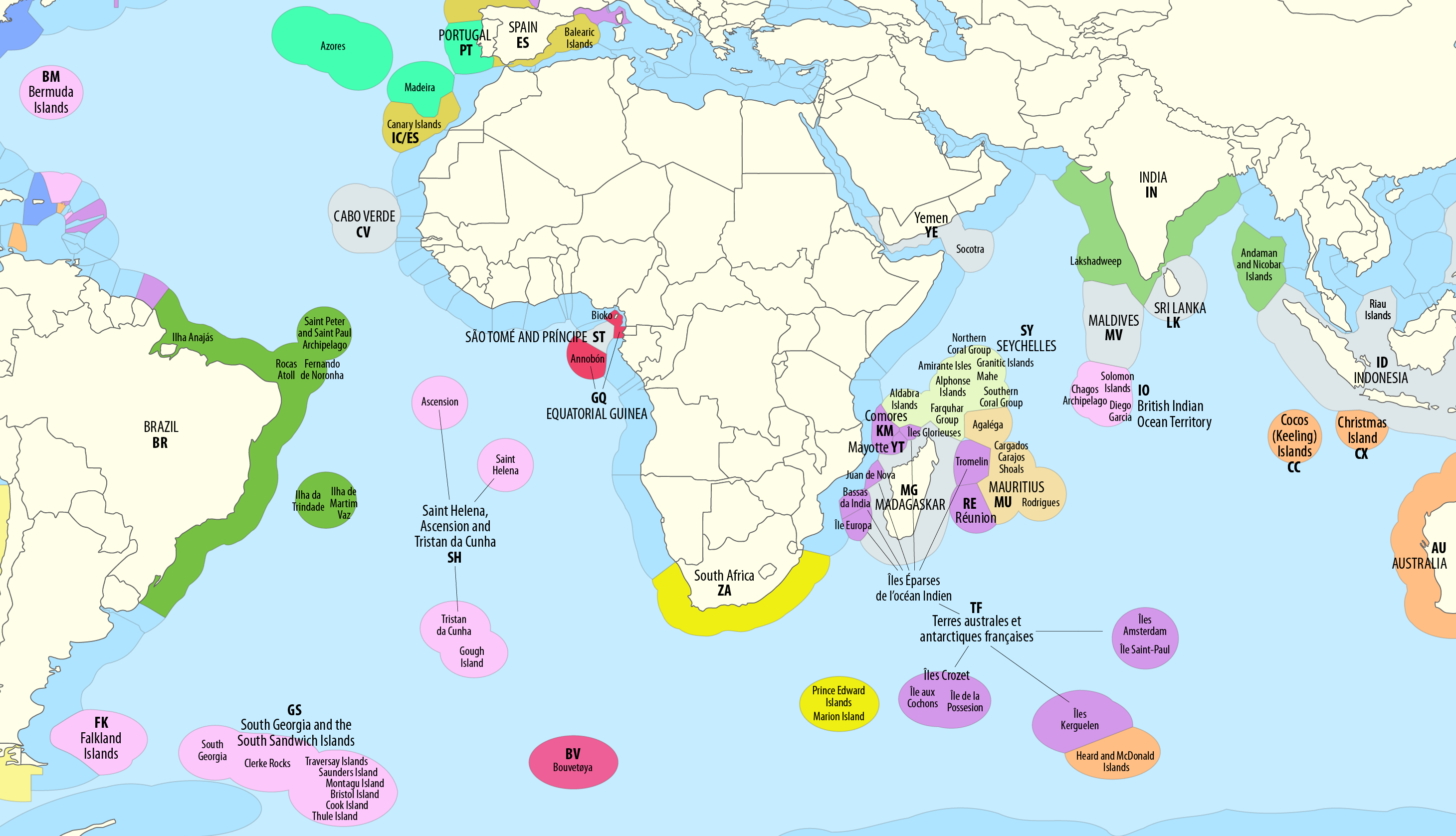How France juggles in the Indian Ocean

France's interests are above all economic: the Indian Ocean contains one of the richest subsoils on the planet. Numbers and insights in Giuseppe Gagliano's analysis
Behind the United States, France has the second largest Exclusive Economic Zone (EEZ) in the world (10,070,754 km²). As the only country present on six of the seven continents and the three largest oceans on the planet, it is an important player in the concert of maritime nations. The presence in the Indian Ocean constitutes 93% of the Zee area, which testifies to its importance. The islands of Riunion and Mayotte, which are the most famous, but also the Scattered Islands with Crozet, Amsterdam and Saint-Paul, or Kerguelen and Tromelin, form French sovereignty areas. Although they have only 1.6 million inhabitants and are, for the most part, claimed by the coastal territories, they remain, given their strategic position, vital geopolitical objects for France.
French interests are primarily economic. In fact, the Indian Ocean contains one of the richest subsoils on the planet. It contains nearly 55% of the world's oil reserves, 60% of uranium, 80% of diamonds, 40% of gas and 40% of gold, not to mention fish reserves.
On the other hand, it is to protect the straits of this area that France maintains a significant presence there. 40% of the world's oil passes through the Strait of Hormuz and 7.5% of the world's maritime trade passes through the Horn of Africa. The straits of Hormuz, Malacca, Sunda or Lombok off the coast of Indonesia, Palk between India and Sri Lanka, but also the Suez and Mozambique canals are the object of piracy that afflicts the region. To counter this scourge, France participates in the Atalanta operation or in the regional cooperation agreement against piracy and armed robbery against ships in Asia, organizations created to secure the area and allow the free movement of traffic maritime.
Since the center of gravity of international geopolitical issues is to the east, France has also committed itself to making the Indian Ocean the “pivot to the east”. In fact, in the Indian Ocean there are six members of the G20, which are Australia, China, South Korea, India, Indonesia and Japan. Thanks to the close collaboration, for more than thirty years, between France and the Indian Ocean Commission, alongside the Union of the Comoros, Madagascar, Mauritius and Seychelles, France also holds the status of an important player in this geo-economic area.
On a strictly strategic level, the French base in Djibouti allows it to control East Africa and the Bab el-Mandeb Strait, just like the French military infrastructure in the United Arab Emirates that opens the doors to the Gulf and the Strait of Hormuz. But it is above all to compete, or at least to contain the offensive posture of competitors that France maintains a constant presence in that area.
The United States has a base there in the Diego Garcia, a port of call for their fifth fleet. On the other hand, China's new silk routes and their “pearl necklace” strategy make the Indian Ocean essential to Beijing. India, in addition to its EEZ of over 2,000 km2, has a diaspora of 6-7 million citizens in Southeast Asia, Australia and New Zealand. Its 2017-2027 naval weapons plan calls for doubling the number of its surface ships, submarines and aircraft. These signals that certainly do not go unnoticed by France and that make it aware of the highly strategic value of this area.
As 19th century US naval officer Alfred Thayer Mahan said, "the power that will dominate the Indian Ocean will control Asia and the future of the world will be played out in its waters."
This space has become both an area of influence and a point of friction between the major world powers. The French presence within the Asean Defense Ministers Meeting-Plus and the Pacific Regional Environment Program, for example, underlines the political will of France to influence the future of this strategic area. By defending the right to freedom of movement, the balance of power and cooperation, France intends to maintain its status as a leading player in this space.
If France, like England on the other hand, have been able to protect and safeguard their national security, Italy has been – at least at present – completely unable to safeguard that fundamental junction constituted by Libya that separates it from ' Africa and through which passes one of the largest volumes of commercial traffic between East and West.
The Libyan war, as we have been able to polemically emphasize several times on these pages , saw the affirmation of two new powers, namely Turkey and Russia (Turkey which influences Tripolitania and Russia Cyrenaica). Our country lacking in this area the protection of Uncle Sam – we naturally allude to the southern flank of NATO and therefore to the USA whose primary interest is to counter the offensive posture in the Indo-Pacific of the Dragon – has shown, at least up to this point. moment, of not being interested in protecting this fundamental strategic junction which is now characterized by the very high instability, which is benefiting jihadist terrorism and the trafficking of immigrants.
But the Italy of Article 11, the Italy of Gramellini's do-gooders, the Italy of irenic pacifism that identifies in the words of Pope Francis a model for orienting itself in the globalized world, has no time to deal with these matters that vaguely recall neo-colonial aspirations . Too bad because if Italy does not take care of it, others will do it, in our place whether they are enemies or present themselves as allies.
This is a machine translation from Italian language of a post published on Start Magazine at the URL https://www.startmag.it/mondo/come-si-destreggia-la-francia-oceano-indiano/ on Sat, 28 Nov 2020 09:50:03 +0000.
